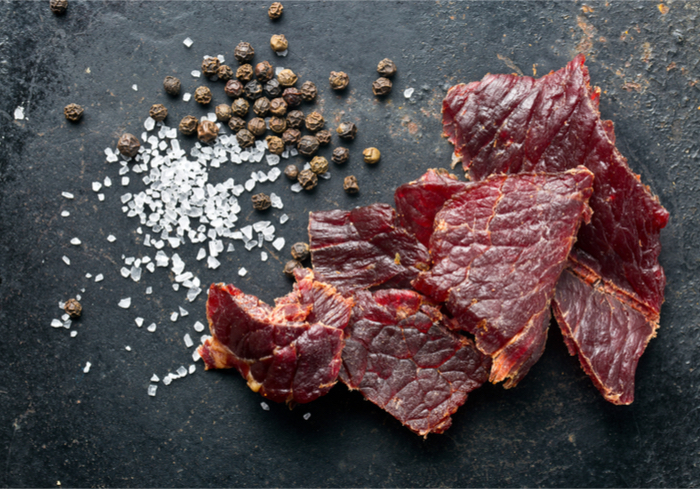
Jerky isn’t just a generic product available on the shelf of the local gas station or convenience store for hungry travelers. It has evolved into a lean, protein-filled snack for active, health-conscious consumers and athletes.
KRAVE Jerky, for example, has expanded this culinary-inspired niche within the broader jerky category. And, by doing so, the brand was able to open the door for premium jerky that is now available in the aisles of premium markets.
To help promote this product category, The Hershey Company tried a novel approach with its KRAVE Jerky brand. Its goal? To reach beyond the typical audience to find consumers that might be interested in their products — and it used a platform from inMarket to help make that happen.
“We saw the partnership with inMarket as another opportunity to be top-of-mind in the healthy, better-for-you, premium snacking category that our artisanal-style jerky is now a part of,” Christina Blaisdell, Digital Marketing + Media Lead, KRAVE Jerky told PYMNTS.com. The goal was to “reach people when they’re most receptive — in the lead up to the store visit, upon entering the store and even with the product in-hand.”
The idea behind the campaign was to go beyond traditional demographics to find consumers based on their real-world shopping histories — and to engage them along key points of their shopping journeys.
Customer Reach
Hershey started its campaign by first looking for consumers that might actually be in the market for jerky. By using inMarket’s Preceptivity, Hershey was able to predict when shoppers were “due” for their next store visit. And, by using that knowledge, Hershey was able to show consumers ads for KRAVE through their mobile devices and desktop computers in the hours leading up to their grocery trips.
“Preceptivity is effective because it eliminates wasted impressions on shoppers who have perhaps just shopped or aren’t in ‘shopping mode,’” Blaisdell said.
Once consumers reach the store, Hershey reached shoppers with mobile ads just as they walked into a store. And, once shoppers hit the aisles, Hershey was able to show mobile ads to consumers that picked up a package of KRAVE, enabling them “to connect with shoppers who were physically holding KRAVE inside a store,” Blaisdell said.
Brand Awareness
Through the campaign, Hershey was able to increase KRAVE’s brand awareness. Before the campaign, KRAVE’s brand awareness measured at 9.2 percent in surveys. After the campaign, nearly 16 percent – or 15.8 percent – of surveyed shoppers said they were now aware of KRAVE. Or, in other words, Hershey had a 72 percent brand awareness lift for KRAVE.
With that brand awareness, consumers craved KRAVE. “Most importantly, 26.80 percent of shoppers said they were planning to purchase KRAVE Jerky after being exposed to the ad — a 3.8 times lift over the pre-campaign baseline,” Blaisdell said.
Customer Demographics
The campaign comes as KRAVE has been expanding the traditional jerky demographic since 2009. And, in order to help grow that market, Hershey could use lots of data.
For example, inMarket found that KRAVE Jerky’s audience is educated, married with a family, generally over the age of 25, earns a higher-than-average income and owns a home in a higher income area. In addition, they found that the digitally engaged KRAVE Jerky shopper is constantly on the go and does, in fact, often visit gas stations and convenience stores.
And, unlike some parents who rely on mass retailers for groceries, the KRAVE Jerky audience prefers to visit their local grocer. This audience is not particularly influenced by savings or health, as they both under-index among grocery retailers such as Whole Foods, Trader Joe’s, and ALDI.
Overall, jerky is gaining popularity as a go-to snack among many consumer groups. Nielsen says that the snacks makes up a $2.8 billion category with growing sales. With that trajectory, jerky may very well be a category ripe for mobile ads for brands such as KRAVE.